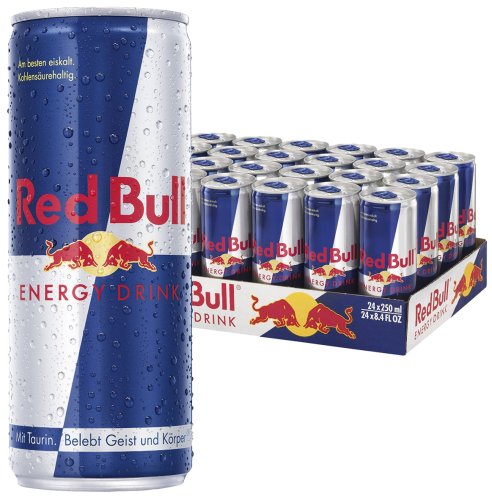

Over the past 16 years, interest in Taurine has waned in the US, while it continues to grow in Austria, where Red Bull is headquarted.

Interestingly, the figure below displays a possible mismatch between the interests of the US market and consumers in Austria around Taurine demand. The ingredient’spurpose in Red Bull, besides its Latin root, is unclear. Taurine, derived from the Latin word taurus, meaning “ox “or “bull,” is a type of amino acid with metabolic benefits. We wondered why Red Bull continued to focus on Taurine as a key ingredient despite its declining demand.
.jpg)
Yet consumers truly don’t understand what niacin is, with more than 100,000 searches every year asking the question: “Is Niacin a B vitamin?” So why does Red Bull energy drinks push Taurine? With such a mild change, the brand can tap into health-conscious consumers and effectively hedge against Coca-Cola’s B-Vitamin enhanced product. To increase interest in the product and, by association, sales, Red Bull should consider re-labeling its messaging so that consumers are aware that the ingredient niacin is, in fact, Vitamin B3.

An Easy Path to Accessing Demand for Vitamin B Covid-19 has only driven health conscious consumerism even further. The Fortune 100 giant knows that Millennials take an active interest in their health, especially when they are with their peers, and appeals to the consumer need for a healthier energy drink-to increase their sales. To meet consumer demand and gain marketshare over competition like Red Bull, Coca-Cola’s new energy drink products focus on B vitamins, displayed right on the front of the can and in the beginning of their product descriptions. B vitamins, on the other hand, have captured consumer attention, known as a natural and healthy method for increasing energy. Guarana is an herbal supplement that also contains a lot of caffeine. Taurine and Guarana are both energy enhancers. There is little difference in consumer interest between Taurine and Guarana. Red Bull, the market stalwart, focuses on Taurine, so why did Coca Cola choose B vitamins and Guarana as the main areas of focus for Coca-Cola Energy? To find the relevant attributes, which would help Red Bull stand out in the energy drink market, we honed in on the key ingredients of Red Bull versus Coca-Cola’s latest launch. Revealing Redbull Energy Drinks new opportunities In a matter of seconds, the White Space tool provides recommendations of attributes and consumer need states that Red Bull can act on.
Red bull taurin mg software#
The software then, using Natural Language Processing, identifies gaps between consumer needs and current product offerings-at the attribute level. To identify new product opportunities for Red Bull energy drinks, Simporter’s White Space AI software collected customer reviews, product descriptions, search traffic, and social media data covering both the energy drink category and adjacent categories including other beverages, foods, and nutritional supplements. Collecting data about Redbull Energy Drinks Using Simporter’s AI tool For Red Bull, it is time to defend its turf (with product innovation) to stay on top of the category. Coca-Cola Energy first launched in the UK and Ireland and, in January 2020, rolled out in the US. However, this changed in 2020, when Coca-Cola launched its first energy drink under the Coca-Cola brand. Where Coca-Cola was present in the energy market category, it was under the separate brand name Monster. For a long time, the Coca-Cola brand seemed content with focusing on its own soda category, solely. Red Bull energy drinks have dominated the category for decades.


 0 kommentar(er)
0 kommentar(er)
